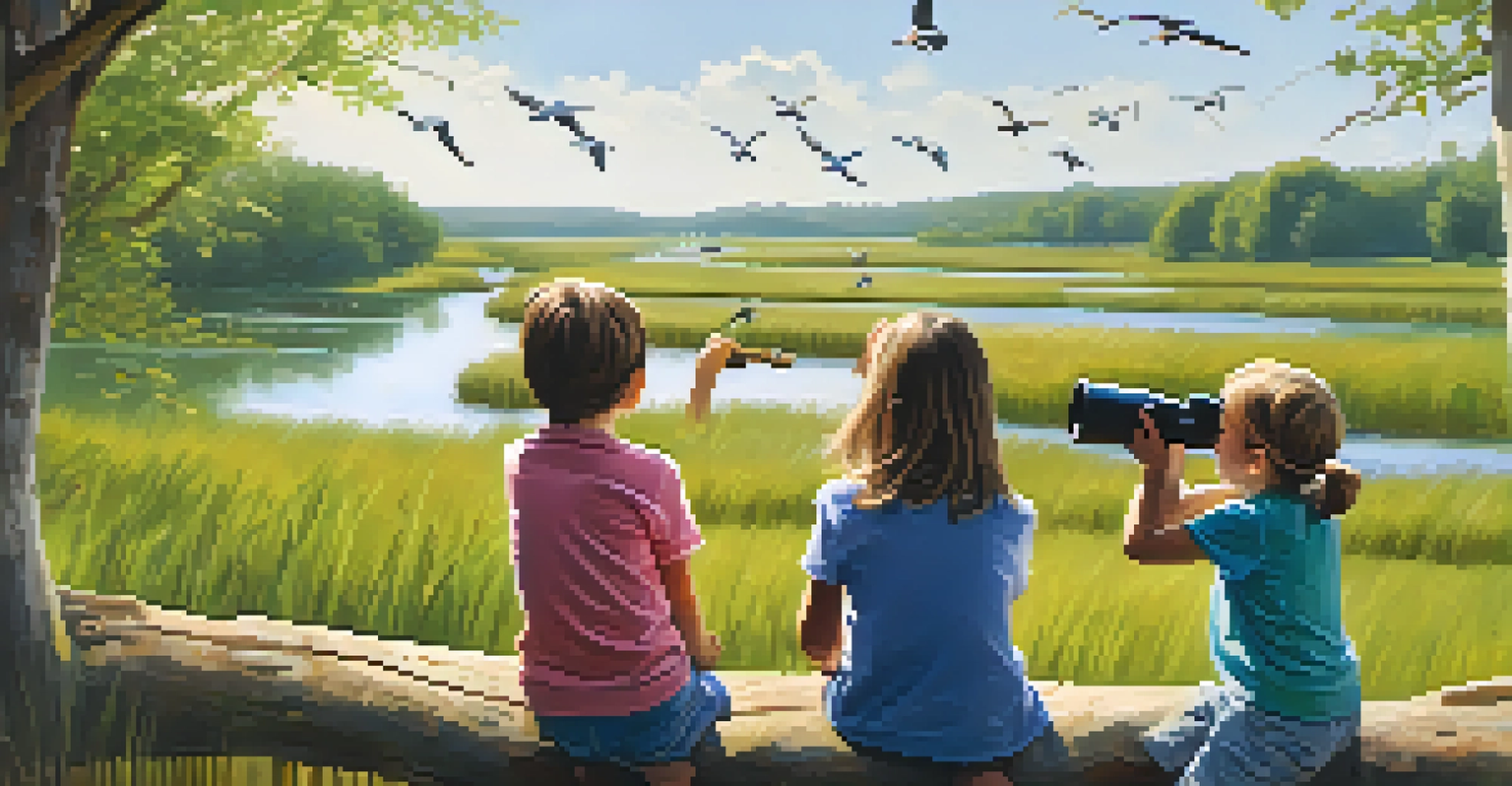Birdwatching: A Peaceful Outdoor Activity to Enjoy

What is Birdwatching and Why Should You Try It?
Birdwatching, or birding, is the leisurely activity of observing birds in their natural habitats. It's a peaceful pursuit that invites you to connect with nature and enjoy the beauty around you. Whether you are a seasoned ornithologist or a curious beginner, birdwatching offers something for everyone.
In every walk with nature one receives far more than he seeks.
Imagine standing in a quiet forest, listening to the cheerful chirping of sparrows, or watching a majestic eagle soar overhead. These moments of connection with wildlife can be incredibly fulfilling. Plus, it's a hobby that encourages mindfulness, as you learn to appreciate the smaller details of nature.
In essence, birdwatching is not just about seeing birds; it's about experiencing the serenity of the outdoors. This calming activity can help reduce stress and promote mental well-being, making it an excellent addition to your routine.
The Equipment You Need to Get Started
To embark on your birdwatching journey, you don't need a lot of fancy gear. A good pair of binoculars is essential for observing birds up close. Look for binoculars with a magnification of 8x or 10x and a wide field of view, which makes spotting birds easier.

Additionally, a field guide or a bird identification app can be incredibly helpful. These resources provide information on different bird species, their calls, and habitats, enhancing your birdwatching experience. You can even bring a notebook to jot down your sightings and reflections.
Birdwatching Connects You to Nature
This calming activity offers a peaceful way to experience the beauty of wildlife and enhance mental well-being.
Lastly, dress comfortably and consider the weather; wearing layers can help you adapt to changing conditions. With just a few essential items, you're ready to step outside and immerse yourself in the world of birds!
Best Locations for Birdwatching Adventures
Birdwatching can be enjoyed in various settings, from local parks to vast wilderness areas. Parks with diverse habitats, such as wetlands, forests, and meadows, are often teeming with birdlife. Even an urban area can surprise you with its avian residents, so don’t overlook your neighborhood!
Bird watching is a great way to connect with nature. It teaches us patience and appreciation for the beauty around us.
Nature reserves and wildlife refuges are particularly great spots for birdwatching. These protected areas often host migratory birds and unique species that you might not find elsewhere. Visiting during migration seasons can lead to thrilling encounters with a variety of birds.
If you're feeling adventurous, consider exploring national parks or coastal areas. These locations provide opportunities to witness rare birds and breathtaking landscapes. Remember, the best birdwatching spots are often those that offer a mix of habitats!
How to Identify Birds Like a Pro
Identifying birds can seem daunting at first, but with practice, it becomes easier and more rewarding. Start by paying attention to the size, shape, and color patterns of the birds you see. Take note of their behaviors, such as how they feed or how they interact with others.
Listening to bird calls is another essential skill. Each species has its unique song or call, and learning to recognize these sounds can enhance your birdwatching experience. There are many online resources and apps available to help you with bird calls and songs.
Essential Gear for Birdwatching
A good pair of binoculars and a bird identification resource are key to enjoying and enhancing your birdwatching experience.
Joining a local birdwatching group can also be a fantastic way to learn from experienced birders. They can share tips, tricks, and insights that you might not find in books. Plus, birdwatching with others can be a fun and social experience!
The Seasonal Rhythm of Birdwatching
Birdwatching is a year-round activity with each season bringing unique opportunities. In spring, migratory birds return, filling the skies with vibrant colors and songs. This time is perfect for spotting new arrivals and observing courtship behaviors.
Summer often sees birds raising their young, making it an exciting time to observe family dynamics. You might find nests and watch fledglings learn to fly. The lush vegetation also provides excellent cover for spotting elusive species.
As autumn approaches, many birds begin their migration south. This transition period can be a great time to witness large flocks and diverse species. Finally, winter birdwatching offers a different perspective, as some birds adapt to colder climates, providing a chance to see species that are more elusive in warmer months.
The Health Benefits of Birdwatching
Engaging in birdwatching offers numerous health benefits, both physical and mental. Spending time outdoors can boost your mood, reduce stress, and improve your overall sense of well-being. The tranquility of nature is a natural antidote to the hustle and bustle of daily life.
Moreover, birdwatching encourages physical activity, whether it's hiking through a forest or taking a leisurely stroll in a park. This gentle exercise can help maintain cardiovascular health and improve fitness levels. Plus, the fresh air and sunlight are excellent for your body.
Birdwatching Benefits Health
Engaging in birdwatching promotes physical activity and mental tranquility, contributing to overall well-being.
Lastly, the act of focusing on birds can enhance mindfulness and promote a sense of presence. By immersing yourself in this peaceful activity, you cultivate a deeper appreciation for nature and its wonders, leading to a more balanced and fulfilling life.
Making Birdwatching a Family Activity
Birdwatching is a fantastic way to spend quality time with family while fostering a love for nature. It’s an engaging activity that can spark curiosity in children and adults alike. You can create lasting memories while exploring local parks or nature reserves together.
Consider setting goals, such as identifying a certain number of species during your outing. This friendly competition can make birdwatching even more exciting and educational. You can also encourage children to document their findings through drawings or a simple scrapbook.

Additionally, involving family in birdwatching can teach valuable lessons about ecology and conservation. As you observe and appreciate wildlife, discussions about the environment and protecting natural habitats can arise, nurturing a sense of responsibility for the planet.